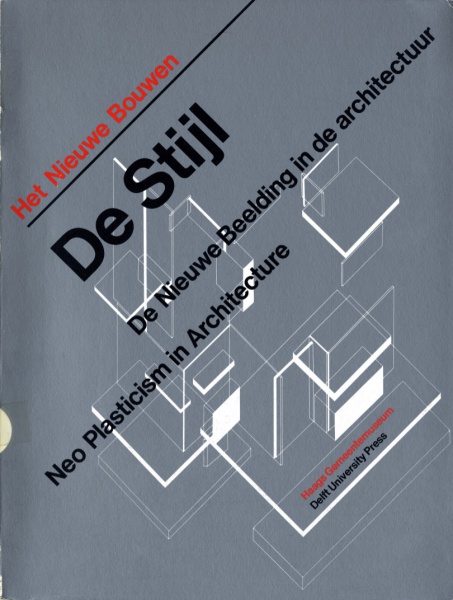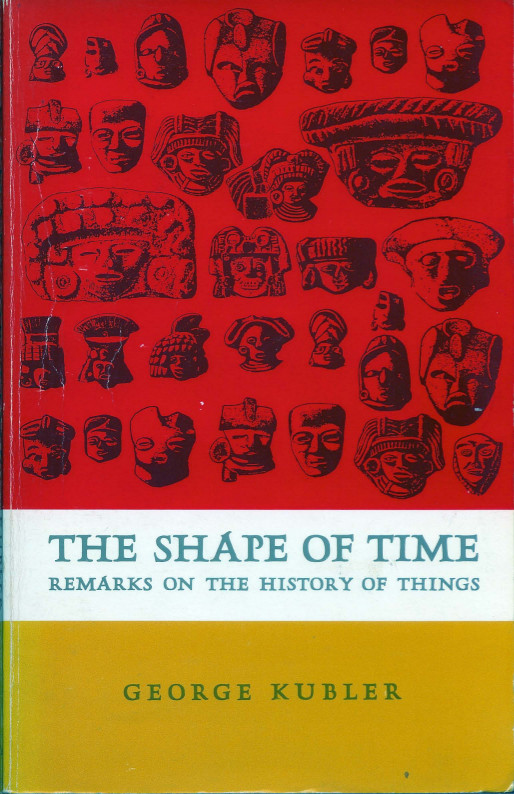Het Nieuwe Bouwen: De Stijl: Neo Plasticism in Architecture (1983) [English/Dutch]
Filed under book, catalogue | Tags: · architecture, art, art history, art theory, de stijl, functionalism, history of architecture, neoplasticism

“In 1975, as a result of intensive teamwork, the Netherlands Museum of Modern Architecture, the Stedelijk Museum in Amsterdam, the Gemeente Museum in The Hague and the Rijksmuseum Kröller-Müller at Otterlo presented a variegated picture of Dutch architecture from 1890 to 1930 in four exhibitions. The interest in them was so great that it was decided almost at once to take up a similar project again after a few years, this time on the subject of ‘Nieuwe Bouwen’ and the Netherlands 1920-1960. That undertaking has now resulted in five exhibitions (a new participant being the Boymans-van Beuningen Museum in Rotterdam), each of which shows a different aspect of ‘Nieuwe Bouwen’, from its prior history to its latter days. ‘Nieuwe Bouwen’ or Functionalism was a worldwide phenomenon which began to appear after the First World War. The realization that a new society was imminent was felt by many to demand radical new solutions to social, economic and cultural problems. In the Netherlands the first contribution to the stating of those problems was made by the artists and architects who had united in the De Stijl movement.” (from the Foreword)
With texts by Theo van Doesburg, Henk Engel, Pieternel Fortuyn, Jan de Heer, Cees Boekraad, Yve-Alain Bois, Umberto Barbieri and Herbert Henkels.
Het Nieuwe Bouwen: De Stijl: De Nieuwe Beelding in de architectuur. Neo-Plasticism in Architecture
Edited by Cees Boekraad, Flip Bool, Herbert Henkels
With an Introduction by Cees Boekraad
Publisher Delft University Press, Delft, and Haags Gemeentemuseum, Den Haag, 1983
ISBN 9062751040
179 pages
via TU Delft
PDF (327 MB)
Comment (0)George Kubler: The Shape of Time: Remarks on the History of Things (1962–) [EN, ES, IT, PT]
Filed under book | Tags: · architecture, art, art history, history, time

“When it was released in 1962, The Shape of Time presented a radically new approach to the study of art history. Drawing upon new insights in fields such as anthropology and linguistics, George Kubler replaced the notion of style with the idea of a linked succession of works distributed in time as recognizably early and late versions of the same action. The result was a view of historical sequence aligned on continuous change more than upon the concept of style–the then usual basis for histories of art.”
Publisher Yale University Press, New Haven and London, 1962
ISBN 0300001444, 9780300001440
xii+136 pages
Reviews: Priscilla Colt (Art Journal 1963), John Howland Rowe (American Anthropologist 1963), Jan Bialostocki (Art Bulletin 1965).
Commentary: Robert Smithson (Arts Magazine 1966), Pamela M. Lee (Grey Room 2001), Mary Miller (Art Journal 2009), Jarrett Earnest (Brooklyn Rail 2014).
Wikipedia
Publisher (2008 Edition)
The Shape of Time (English, 1962, 7 MB, updated on 2013-9-13, OCR’d version via mutewar)
La configuración del tiempo (Spanish, trans. Jorge Lujan Muñoz, 1975, 43 MB, added on 2015-12-10)
La forma del tempo (Italian, trans. Giuseppe Casatello, 1976, added on 2015-12-10)
A forma do tempo (Portuguese, 1990, 11 MB, added on 2015-12-10)
See also The Shape of Time. Reconsidered, 1982.
Comment (1)Sven-Olov Wallenstein: Nihilism, Art, and Technology (2010)
Filed under thesis | Tags: · aesthetics, architecture, art, art history, avant-garde, nihilism, philosophy, technology

Beginning in an analysis of three paradigmatic instances of the encounter between art and technology in modernism—the invention of photography, the step beyond art in Futurism and Constructivism, and the interpretation of technology in debates on architectural theory in the 1920s and ’30s—this book analyzes three philosophical responses to the question of nihilism—those of Walter Benjamin, Ernst Jünger, and Martin Heidegger—all of which are characterized by an avant-garde sensibility that looks to art as a way to counter the crisis of modernity.
These responses are then brought to bear on the work of the architect Mies van der Rohe, whose “silence”—understood as a withdrawal of language, sense, and aesthetic perception—is analyzed as a key problem in the interpretation of the legacy of modernism. From this, a different understanding of nihilism, art, and technology emerges. These concepts form a field of constant modulation, which implies that the foundations of critical theory must be subjected to a historical analysis that acknowledges them as ongoing processes of construction, and that also accounts for the capacity of technologies and artistic practices to intervene in the formation of philosophical concepts.
Originally presented as a compilation thesis in theoretical philosophy, the work was published as a book by Axl Books in 2011.
Doctoral Thesis
Department of Philosophy, Stockholm University, 2010
ISBN 9789174470734
92 pages
Publisher (Thesis)
Publisher (Book)
PDF (Thesis; without images)
Comment (0)
